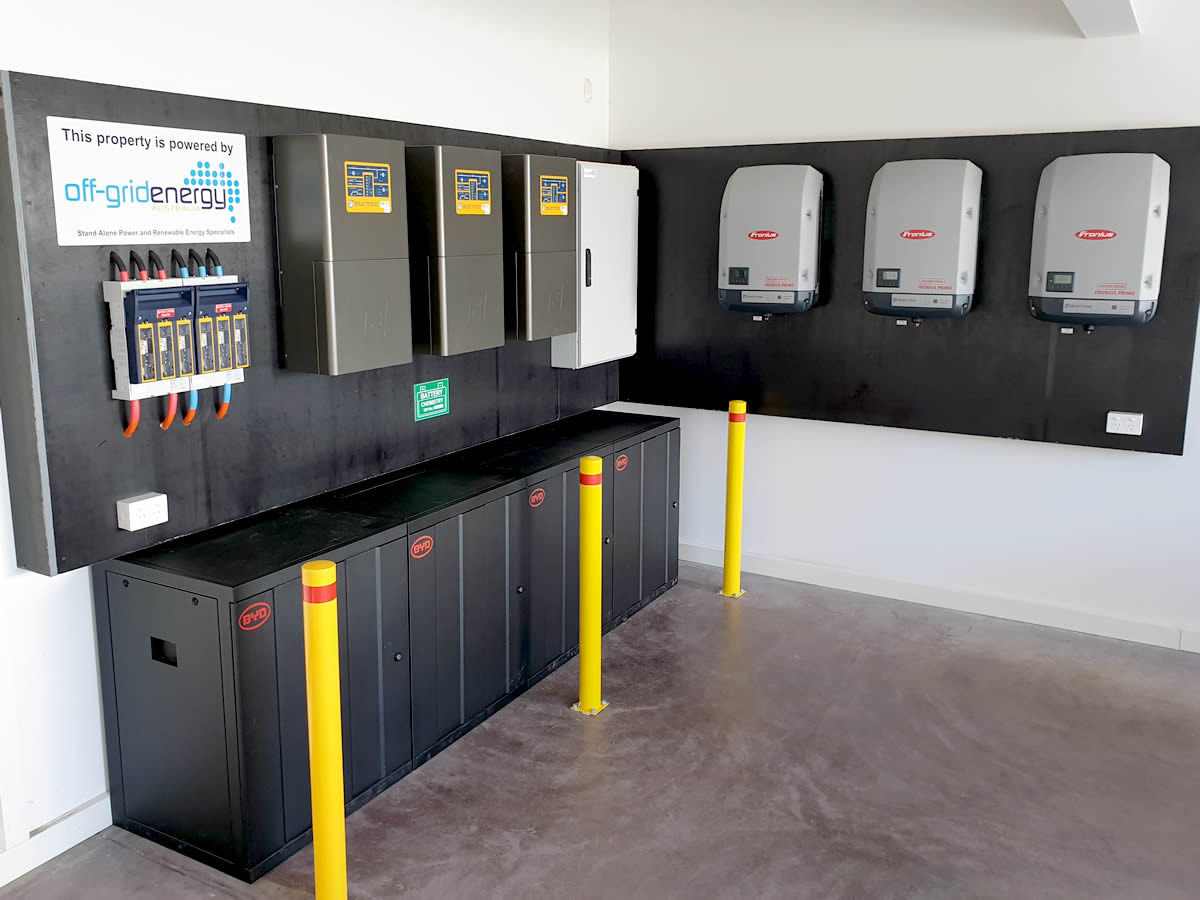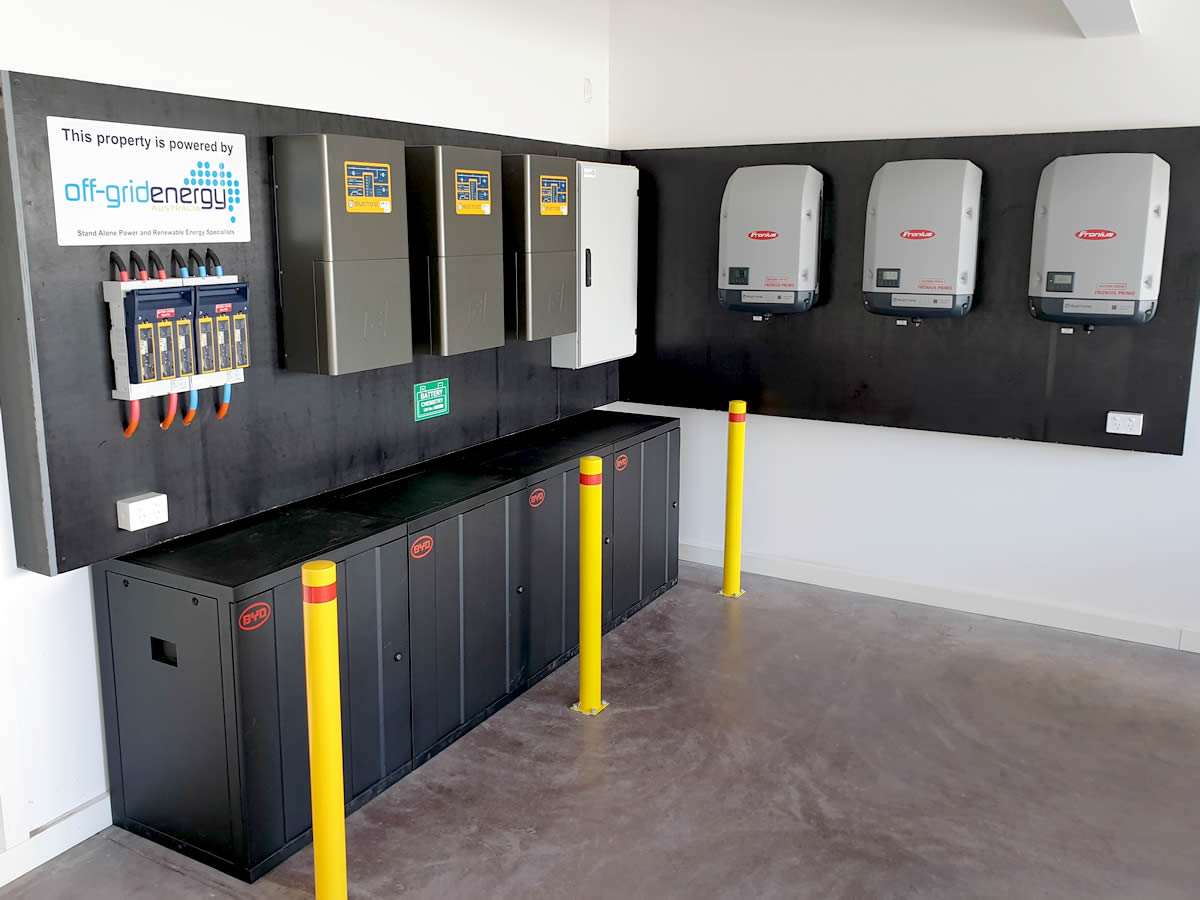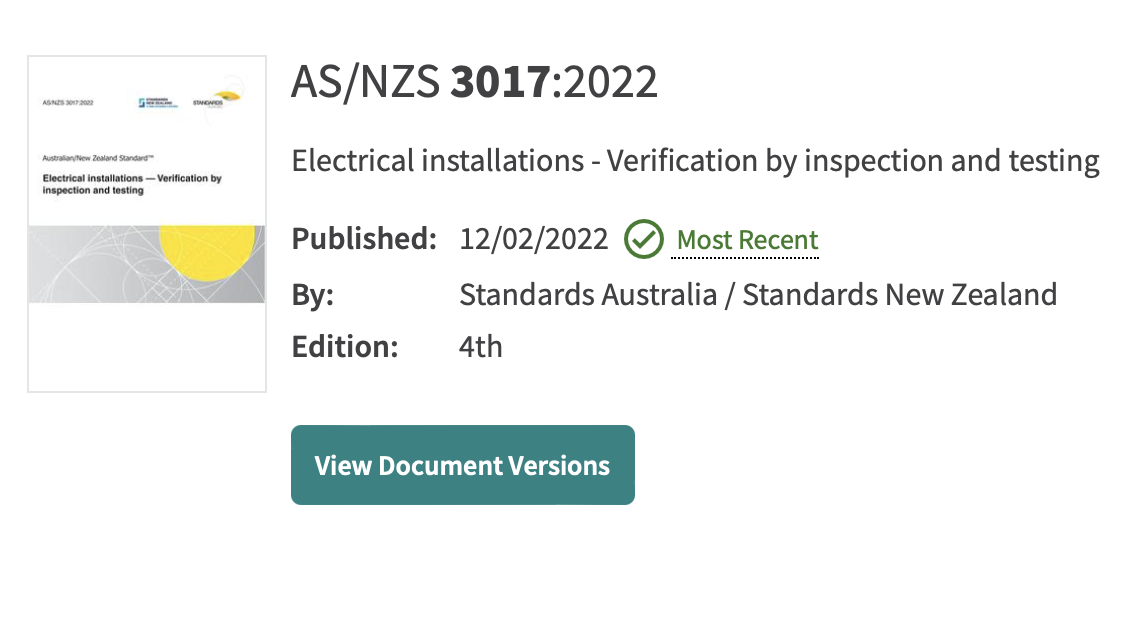Title Page
-
Site conducted
-
Conducted on
-
Prepared by
-
Location
Battery System
-
Check condition of environment, and remove or create action to remove hazardous materials if any exist
-
Check condition of battery inverter including: secure termination of battery and AC cabling N / A / E; comms cabling; two wire auto start; glands secured so no points of entry for vermin or insects;
-
Check voltage of battery supply at battery inverter and at battery bank
-
Check DC wiring from Battery inverter, through DC isolator, to battery bank. Including terminals, general condition, entry points, mechanically secured
-
Update Firmware - battery inverter
-
Update Firmware - battery BMS
-
Check the fallback function, turn on the PV supplies. Unplug the RS485 lead (RJ45) in the SP PRO.<br>Check that each of the connected grid inverter’s output drops to zero after 10 seconds.
-
Confirm signage in place compliant with AS5139 / AS4509 / AS4777 including - ES, Isc (sum if multiple parallel banks), Voltage, Danger, relevant hazard signs, DC isolator, “battery” for cabling, shutdown procedure (adjacent to PCE), system location noted at Switchboard.
-
Checklist as per 5139:
-
Confirm compliance with AS5139 checklist and note any exceptions
Solar System
-
Site: clean, no debris on or under array
-
PV modules: DC isolators have good integrity; integrity of glands for isolator; no fractures, browning corrosion of panels; no moisture penetration of panels; Conduit has good mechanical integrity and fixings; integrity of glands for isolators
-
Wiring: good mechanical integrity; integrity of penetrations; integrity of earthing system; wiring secured to frame system and not lying on roof.
-
System tests results: Voltage Open Circuit; Isolation device operates correctly; Power production matches array size, orientation, tilt, weather and age of system;
-
Check mounting system: feet secure; rails secure; panels secure; wiring secured to array mounting structure where necessary.
-
Clean solar panels and remove any debris
Generator
-
Check Generating set operation (including automatic start and remote start and remote stop)
-
Check wiring and conduit and fixings to Generating set
-
Written notification to customer to have Generating set maintenance done by a qualified mechanic for oil, filter, operational parameters completed at least annually or after manufacturer specified running hours
-
As a minimum: Large generator 12months or 250hrs
Portable Generator 12months or 100hrs












